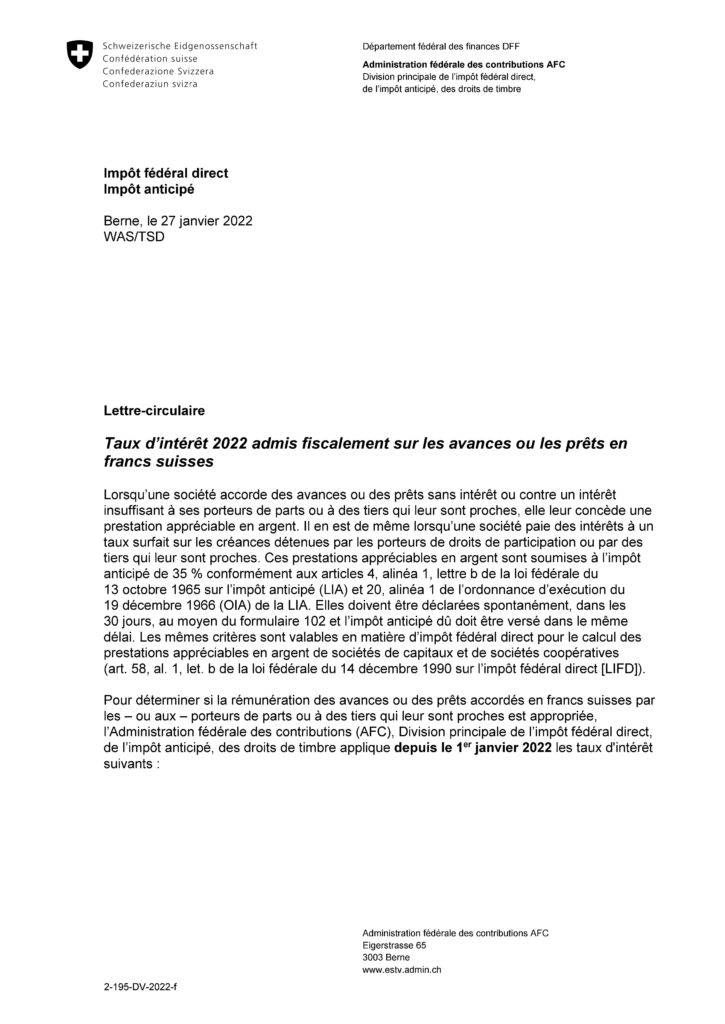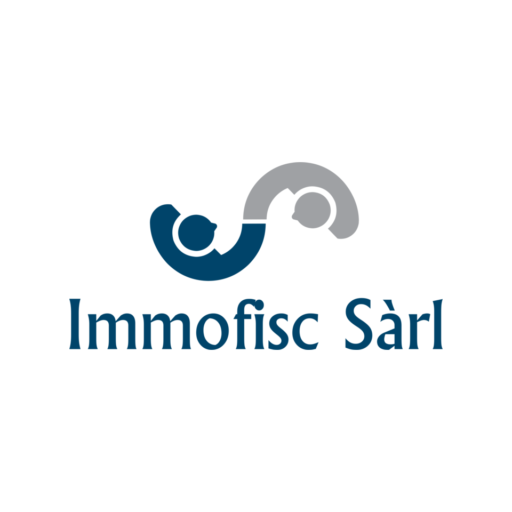ADVANCES AND LOANS TO SHAREHOLDERS OR ASSOCIATES
In order to limit taxable income to 100% directly, for all holders of SMEs in companies, the recurring question is to find the balance between salary, dividend, loan or advances from the company.
As a reminder, it is possible by respecting specific rules to grant:
- Loans, with interest fixed each year by the AFC
- Dividends to the main shareholder (Minimum 10% of the shares) and taxable at the rate of 60%.
It is clear that the irregular results of the past two years with the repercussions and consequences of the pandemic do not help to maintain reasonably smooth taxation over time and the decisions taken have significant financial repercussions, whether at tax or social charges.
There are specific rules to be observed before making decisions and special attention must also be paid to the rates to be applied for loans and advances which are set for each fiscal year by the AFC.
The loan rates are differentiated according to the use made of it and the currency in which the loan is denominated, depending on the latter the rates can vary enormously.
Do not hesitate to contact us for a first interview on this subject.
ADVANCES AND LOANS TO SHAREHOLDERS OR ASSOCIATES
General Rules 2022
- the loan is possible but must not jeopardize the company (means salaries, LPP, AVS and creditors).
- The loan must be capitalized (long term of the balance sheet)
- There is mandatory interest according to the federal table.
- The loan is nominative (the person must be declared and not just named "loan to the administrator" (agreement of the board of directors if several people)
AFC Appendices
- Company loan - Interest rates and rules in CHF
- Company loan - Interest rate in foreign currencies
- AFC Circular 6 hidden equity
To determine whether the remuneration of advances or loans granted in Swiss francs is appropriate, the Federal Tax Administration applies the following interest rates annually:
Tax-allowed interest rate on advances or loans in Swiss francs



Tax-allowed interest rate on advances or loans in foreign currencies



AFC-CIRCULAR NO. 6



DIVIDEND - RULES
Dividend means the amount of profits that a public limited company pays to its shareholders.
The payment and the amount of a dividend are proposed by the management at the general meeting (or meeting of shareholders) and decided by the shareholders. There is no legal obligation to pay out all or only part of the profit.
The company can keep the profit to invest in a new machine or in a building, for example.
In Switzerland, the dividend is generally paid once a year.
Dividing the dividend by the share price gives its yield. It indicates the amount realized for each franc invested. The dividend yield combined with the rise in the share price gives the total return of the shares or investments.
In Switzerland, dividends are subject to income tax and withholding tax .
There are two types of dividends: cash dividends , which are paid out in cash to the shareholder, and dividends in kind , which may be paid out in the form of any assets of the limited company. It is usual for companies to distribute the shares of a subsidiary in the form of dividends in kind and thus spin-off from the subsidiary.
For LLCs, we are not talking about dividends but about distribution of profits. The amount of dividends depends on the profit of the company; as a rule, part of the profit is withheld and allocated to reserves, for example to finance investments. In some cases, a special dividend may also be paid independently of the annual surplus.
Ceiling amounts
In principle, the share of the salary and that of the dividend must be adapted. Benefit payments should be comparable with third parties and consistent with local and industry practices.
It should be noted on the one hand that an excessively high dividend payment, in the event of a manifestly disproportionate amount in relation to the salary, may be requalified by the compensation fund as a salary paid up to the usual remuneration in the sector. .
On the other hand, the tax authority may assume a hidden distribution of dividends in the event of the payment of excessive salaries to shareholders. This is always an overall consideration in a case-by-case review.
In federal taxation case law, the "Nidwaldian practice" has imposed itself to answer the question of a manifest disproportion between work and its remuneration, or between capital employed and dividends paid.
(ATF 134V 297). According to this principle, the declared AVS income and the salary in accordance with industry practices are related to the payment of dividends and the value of the share in order to determine whether a part of the dividends distributed should be considered as a determining income for the contributions.
It is up to the compensation funds to independently assess whether an income component should be qualified as determining salary or capital income. However, the compensation funds must adhere to the point of view of federal tax law (Art. 23 RAVS).
A different view of tax authorities and social insurance institutions should be avoided if possible.
From a return on equity of more than 10%, the compensation funds assume that the dividend is excessive (ch. 2011.7 Guidelines on the determining salary in the AVS, AI and APG, status January 2016).
An exception to this principle is however possible, according to recent case law in the field of tax law, for example in the case of a substantive dividend (judgment of October 25, 2012; 9C_669/2011).
Substantive dividend
Dividends can be distributed not only on the net profit of the past financial year, but also on the substance (art. 675 al. 2 CO, open reserves). A distribution of dividends on a financial year with a loss is also possible insofar as the profit brought forward is higher than the loss.
According to case law in federal tax law, an excessive dividend therefore corresponding to a return on equity of more than 10%) should not lead to a requalification as a salary if it is a dividend deducted from the substance and if a salary at least equivalent to the practices of the sector was paid during the period of hoarding of the company's profits (ie during the supply phase of the substance with a view to subsequent payment of dividends).
In other words, this means that a disproportionate dividend could not be requalified as a salary during the reserve constitution phase due to social insurance law if a salary in line with industry practice has been paid during these years. It does not matter if an appropriate salary was also paid in the year of payment of the substantial dividend.


